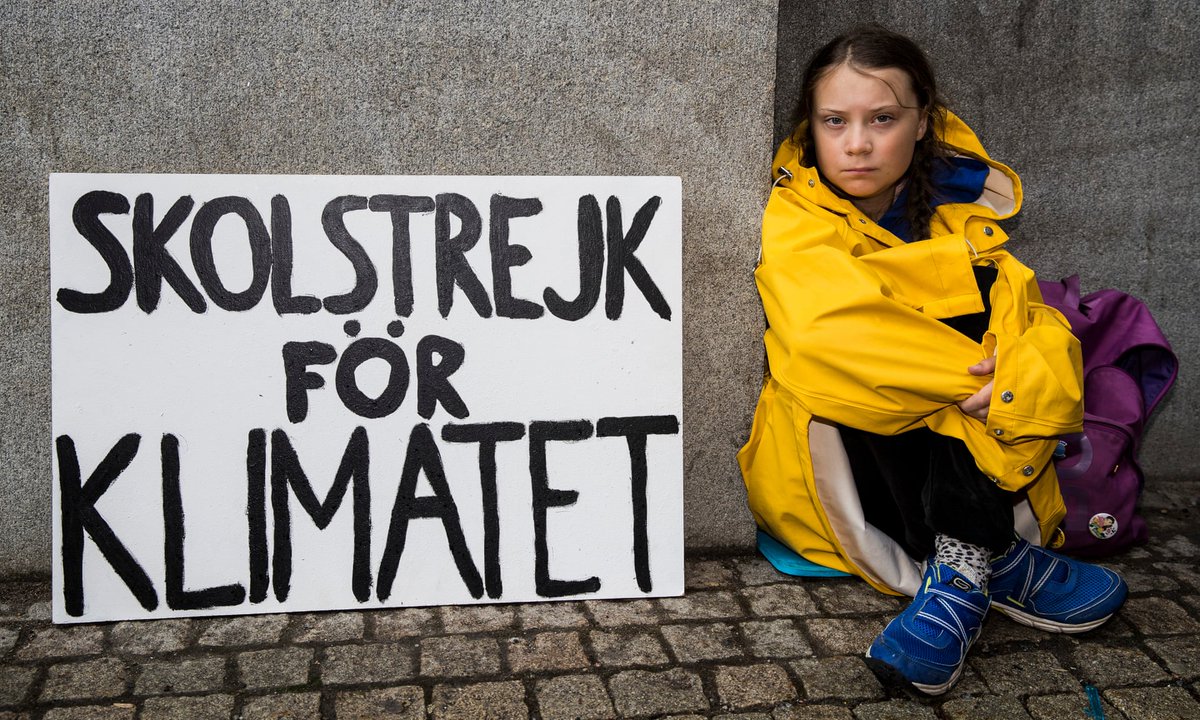THREAD: Happy #EarthDay ! Let’s look now at one key factor, besides Covid-19, that makes this year’s celebration different from many that have come before: the kids.
#envhist #envhum
#envhist #envhum

Of course, children and youth have long been involved in Earth Day events and other actions. Yet environmental leaders and the media have often presented them as emotional props, as symbols of innocence and vulnerability in need of adult protection.
Consider this 1963 ad produced by SANE in its campaign against nuclear testing. We see three white children, all sporting open-mouthed smiles and shiny white teeth. The text below, though, undercuts the carefree image: “Your children’s teeth contain Strontium-90.” 

Images of children in danger provide ways to represent long-term environmental hazards, such as the accumulation of Strontium-90 in growing bodies. This strategy has also been used in climate change campaigns—such as this PSA of a girl on the train tracks.
In An Inconvenient Truth, Al Gore also emphasized intergenerational ethics. “Future generations,” he said, “may well have occasion to ask themselves, ‘What were our parents thinking? Why didn’t they wake up when they had the chance?’ We need to hear that question from them—now.” 

Yet, as we know, political leaders did not come to the rescue. “It is worse, much worse, than you think,” @dwallacewells wrote in The Uninhabitable Earth. “The slowness of climate change is a fairy tale perhaps as pernicious as the one that says it isn’t happening at all.”
The indigitation that Greta Thunberg and other activists express is a response to this form of denialism, a falsely optimistic vision that infantilizes the public, that denies collective agency at the very moment it is needed.
Thunberg’s forceful warnings and repeated protests in public spaces set her activism apart from the emotive symbolism of the vulnerable child, yet her background—an affluent white youth from northern Europe—no doubt helped propel her into the limelight.
As @chikaunigwe explained, “For years, young people across the world have been campaigning to draw attention to the crisis our planet faces, and to tackle it. Yet it seems the media is only interested in one young climate activist.” theguardian.com/commentisfree/…
Reducing the movement to a single charismatic figure ignores the history of frontline communities building intersectional movements for climate justice. As Thunberg herself has emphasized, her activism should instead be seen as part of a much larger network.
While the school strikes are sometimes seen as nothing more than generational shaming, they are about something far more significant. @sunrisemvmt and other youth-led organizations are fighting for systemic change and pushing for a Green New Deal.
For a great intro to the Green New Deal, watch this video narrated by @AOC with illustrations by @mollycrabapple. It includes a fictional child named Ileana who later works on a government project to dismantle a fossil fuel pipeline and restore wetlands.


As participants in an intergenerational and intersectional movement, children and youth have helped push climate justice to the center of this year’s Earth Day.
From April 22 to April 24, Earth Day will not be in the streets, but it will be live:
earthdaylive2020.org/?source=earthd…
From April 22 to April 24, Earth Day will not be in the streets, but it will be live:
earthdaylive2020.org/?source=earthd…
• • •
Missing some Tweet in this thread? You can try to
force a refresh









